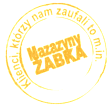UNO filling training
UNO Chemical Unloading Station - Tank filling and emptying equipment

We have to offer a comprehensive service related to the production, assembly and delivery of chemical-resistant tanks and equipping them with emptying and filling stations. The scope of our work includes: unloading and reloading stations, UDT chemical-resistant tanks, pipelines and transfer to production lines.
We provide full support in the investment process, such as notification and agreement with the TDT Transport Technical Supervision unit. We do not supply the NO stations themselves. We carry out the design of the UNO loading station and NO equipment for hazardous liquids. We store them in our tanks for, among others, sulphuric acid, nitric acid, hydrochloric acid, water: ammoniacal, oxidised, sodium hypochlorite, soda lye and others.
Scope of works carried out in UNO systems:
- matching the requirements for a given investment / development;
- design of UNO loading station;
- agreement and preparation of technical and registration documentation for the TDT unit;
- delivery of UNO equipment and installation of fixtures at the site.
What is the filling process for storage tanks?
Filling takes place with additional arrangements and operations (especially in TIR tankers). Each filling and emptying equipment station (UNO) operates with a system of valve, pipe, hose and signal connections. These installations and fittings are subject to the Regulation of the Minister of Transport of 20 September 2006 on the technical supervision conditions to be met by equipment for filling and emptying transport tanks (as amended) in agreement with and notification to the TDT unit.
NO equipment for unloading tanks (UNO station)
It is used for the unloading and loading of transport tanks with hazardous liquid raw materials (corrosive, poisonous, flammable). The purpose of this equipment is to safely ensure the process of emptying and filling tankers into storage tanks in liquid raw material depots. The stations have a multitude of electronic and mechanical features that ensure high safety for both the installation itself and the personnel operating the station. The necessity of using appropriate installation safeguards during the unloading of liquid hazardous raw materials from tankers is stipulated in the Regulation of the Minister of Transport of 20 September 2006. The use of equipment and process safeguards in accordance with legal requirements is subject to notification to and agreement with the TDT unit.
Safeguards applied according to the hazard category building NO:
- Automatic disconnection valve;
- Control cabinet with acoustic leak indication;
- Measurement:
- temperature and pressure of the medium,
- emissions and leakage,
- Connector:
- emergency disconnection,
- dry-cutting.
The most important legislation underpinning the technical supervision of equipment:
- Act of 21 December 2000 on technical supervision;
- Regulations of:
- 26 November 2010. Minister of the Economy,
- 7 December 2012. Council of Ministers,
- 21 May 2019. Minister of Enterprise and Technology.
When preparing the NO device for testing, the requirements of the device's operating instructions must be taken into account.
Classification and labelling in transport:
- ADR by road;
- ADN inland;
- Rail RID.
List of dangerous goods - ADR marking
Land transport is the most common mode of transport of hazardous materials. All regulations and standards related to the carriage of goods by road are defined by the European Agreement ADR (The European Agreement concerning the International Carriage of Dangerous Goods by Road). It is valid not only in Europe, but also worldwide. When importing goods from China to Poland, it is necessary to bear in mind the acts of local law, i.e. the Law on the Carriage of Dangerous Goods and the Law on Weapons and Ammunition. Packages containing dangerous goods must be appropriately labelled. An orange plate shows the hazard identification number. These are usually two or three digits, preceded by a letter and a four-digit UN number. ADR stickers, on the other hand, are in the shape of a square rotated by 45 degrees. The markings should be located in a prominent position.
Miscellaneous hazardous materials and objects
Present a hazard during transport - other than the materials specified in the other classes.
- M1 - fine dust that can be hazardous to health if inhaled;
- M2 - can form dioxins during a fire;
- M3 - emit inflammable vapours;
- M4 - lithium batteries;
- M5 - rescue items;
- M6-M8 - hazardous to the environment;
- M9-M10 - elevated temperature;
- M11 - hazard in transit not corresponding to the definitions of other classes.
RID - Transport of dangerous goods by rail
This is a regulation for the international carriage of dangerous goods by rail. Appropriate safety precautions must be provided that are appropriate to the characteristics and extent of the hazards.
- Dangerous reactions include:
- production of unstable and corrosive materials,
- dangerous increase in pressure,
- release of inflammable, suffocating, oxidising or poisonous gases,
- generating large amounts of heat or combustion;
- For labelling, similar boards are used to those of the ADR. They are orange in colour, with the hazard number at the top and the UN code at the bottom, identifying the specific substance. They are placed on the sides of tanks or containers.
- The upper part of the board presents a two- or three-digit number indicating the risk of the load being carried:
- 2 - gas emissions;
- 3 - self-heating or liquid flammable substance;
- 4 - flammable solid;
- 5 - oxidising properties;
- 6 - poisonous or infectious effects;
- 7 - radioactive action;
- 8 - corrosive;
- 9 - the threat of spontaneous and violent reaction.
- If the load can only cause one of the hazards, a '0' is added after the figure in question. If the hazard is very severe, then this digit is doubled.
- A number preceded by the letter 'X' - indicates that in a fire situation, the fire must not be extinguished with water.
- UN code number at the bottom with which the substance being transported is identified.
For example:
- acids:
- "1789" - Hydrochloric,
- "1805" - Phosphorus,
- "1830" - Sulphur with a concentration of more than 51%,
- "2031" - Nitrogen with a concentration below 55%,
- "1202" - fuel oils;
- "1203" - petrol;
- "1223" - paraffin;
- "1230" -methanol;
- "1266" - flammable perfume products;
- "1268" - petroleum distillates.
Classification of dangerous goods associated with the tanker filling and emptying course at the Operator Training Centre.
Class:
- 2 - gases;
- 3 - materials: flammable liquids;
- 4.1 - flammable, self-reactive, explosive desensitised solids;
- 4.2 - self-igniting;
- 4.3 - produces flammable gases on contact with water;
- 5.1 - oxidising;
- 5.2 - organic peroxides;
- 6.1 - toxic materials;
- 6.2 - infectious;
- 8 - corrosive;
- 9 - miscellaneous objects and materials and all goods not classified as dangerous that are filled under pressure or emptied and transported (cement, flour, fertilisers, petri fluid, oils, bitumen, asphalt and others).
Course in filling and emptying transport tanks (tankers)
We provide training for individuals or companies. In the case of organised groups, we will carry out training throughout Poland if the training client provides stationary equipment for filling and emptying transport tanks with a current TDT examination for practical classes. We carry out all the formalities related to registering students for examinations and setting an examination date by the Transport Technical Supervision. We have the option of holding training courses at weekends.
What does a pouring course look like?
It is made up of a theoretical and practical part, which ends with a state examination before the Transport Commission of the Technical Supervisory Authority.
What does tank filling and emptying training cover?
- general information on the physico-chemical properties of dangerous goods RID/ADR;
- knowledge of dangerous goods transported in RID/ADR transport tanks;
- a set of rules according to the technical supervision of NO equipment and transport vessels;
- types of equipment for filling and emptying transport tanks, together with the operation and control of such equipment;
- health and safety and fire regulations;
- environmental protection;
- providing first aid.

































